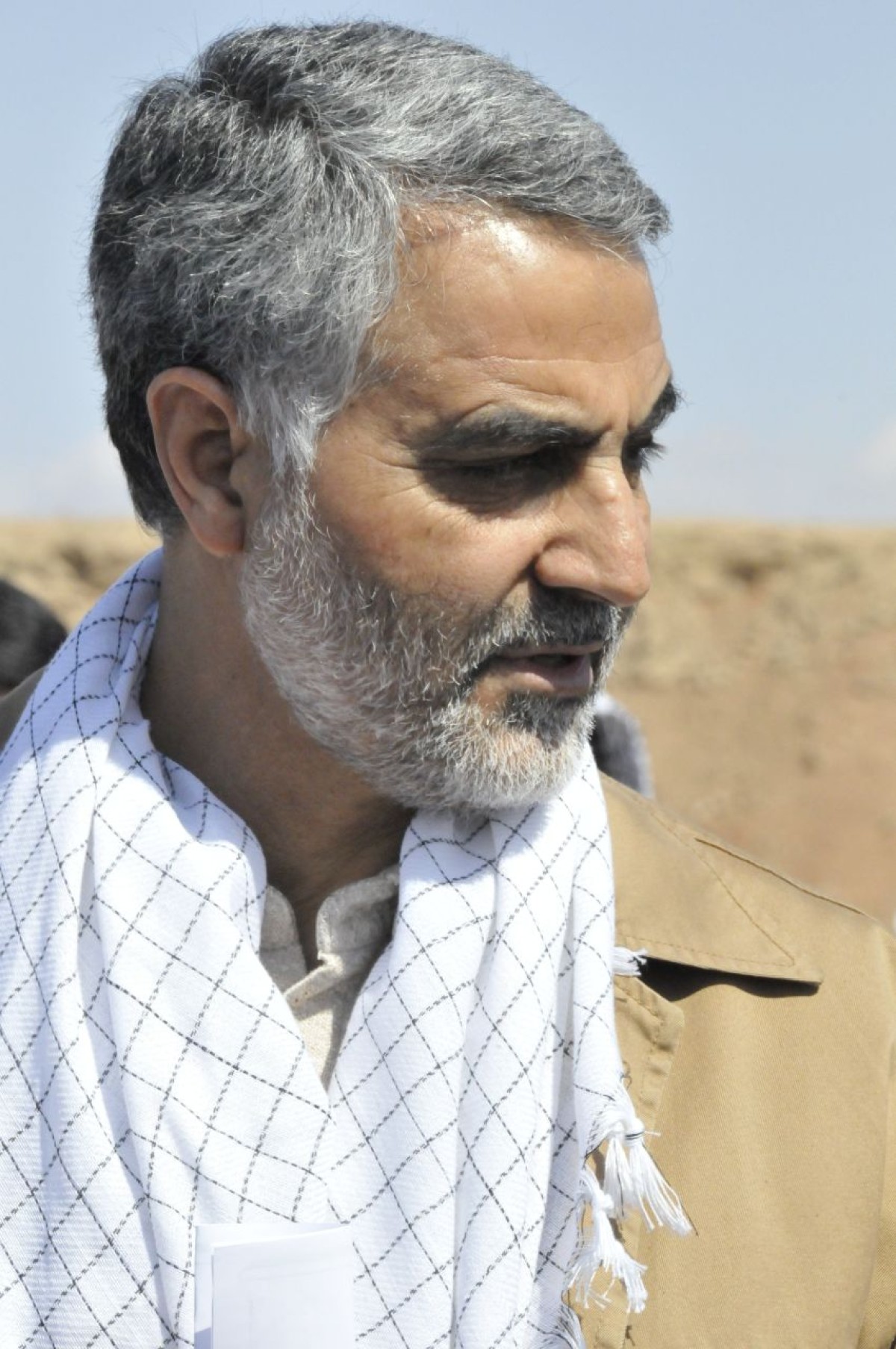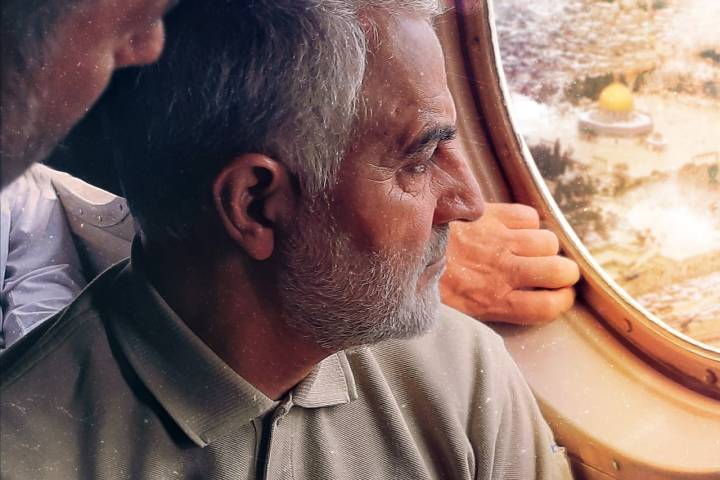It was in the midnight of January 3rd 2020 that in an act of terrorism, the government of the United States decided to close eyes on international law and assassinated one of Iran’s top generals, Major General Qassim Soleimani, in a drone strike near Baghdad International Airport.
Immediately after the attack, Donald Trump appeared in a live address to the US military in California and openly admitted that he did issue the order of killing General Soleimani; “Last night, at my direction, the United States military successfully executed a flawless precision strike that killed the number-one terrorist anywhere in the world, Qassim Soleimani”, Trump said. Back in 2017 in a meeting with then National Security Adviser H.R. McMaster, Trump had also expressed a desire to target General Soleimani.
This criminal act, the order of which was directly issued by the president of the U.S., Donald Trump, was strongly condemned immediately after happening by the Iranian government and many countries in the region as well as world powers including France, Russia and China.
Inside the US, the move was also condemned; Vermont Sen. Bernie Sanders, for instance, said in this regard that “Trump’s dangerous escalation brings us closer to another disastrous war in the Middle East that could cost countless lives and trillions more dollars,” he said in a statement. “Trump promised to end endless wars, but this action puts us on the path to another one.”. meanwhile, the US Senate also rebuke Trump’s act of terrorism and in reaction, passed a resolution the following week to limit Trump’s power to order military action against Iran without first seeking Congress’s permission.
But was the assassination really against international law? The answer is yes; Under article 51 of the UN charter the use of force against any person shall be prohibited except only under the two circumstances: first, when the use of force was authorized by the UN Security Council and second, when a country acted in self-defense. It is as clear as crystal that the UN Security Council did not authorize the strike. For the attack to be considered as an act of self-defense under international law, the US must have acted to avert an imminent attack. However, the Article’s ambit of self-defense is only in the response to an attack that has already been done or occurred or is underway. Thus, self-defense is permissible only in response to armed attacks that are imminent. Therefore, there is no room for question that the brutal assassination of Major General Qassim Soleimani is nothing but a crime under international law. The UN also took the same position that what the US did was indeed a breach of international law.
A United Nations expert investigating summary executions also said after the attack that the United States’ targeted killing of General Qassim Soleimani of Iran was unlawful and risked eroding international laws that govern the conduct of hostilities. According to Agnès Callamard, the UN special rapporteur on extrajudicial killing, “the killings of Qassim Soleimani and Abu Mahdi al-Muhandis violates international human rights law”. The brutal assassination of General Soleimani was not the first act of terrorism by the United States against the Irani officials and people. In fact, the U.S. has a long-listed record of criminal acts against Iranians, including, for example, U.S. missile attack on Iran Air Flight 655 in 1988, in which all 290 people on board were killed, as well as the assassination of many Iranian nuclear scientists during the recent years, in all of which the U.S. had a major role along with Israel.
1
Immediately after the attack, Donald Trump appeared in a live address to the US military in California and openly admitted that he did issue the order of killing General Soleimani; “Last night, at my direction, the United States military successfully executed a flawless precision strike that killed the number-one terrorist anywhere in the world, Qassim Soleimani”, Trump said. Back in 2017 in a meeting with then National Security Adviser H.R. McMaster, Trump had also expressed a desire to target General Soleimani.
This criminal act, the order of which was directly issued by the president of the U.S., Donald Trump, was strongly condemned immediately after happening by the Iranian government and many countries in the region as well as world powers including France, Russia and China.
Inside the US, the move was also condemned; Vermont Sen. Bernie Sanders, for instance, said in this regard that “Trump’s dangerous escalation brings us closer to another disastrous war in the Middle East that could cost countless lives and trillions more dollars,” he said in a statement. “Trump promised to end endless wars, but this action puts us on the path to another one.”. meanwhile, the US Senate also rebuke Trump’s act of terrorism and in reaction, passed a resolution the following week to limit Trump’s power to order military action against Iran without first seeking Congress’s permission.
But was the assassination really against international law? The answer is yes; Under article 51 of the UN charter the use of force against any person shall be prohibited except only under the two circumstances: first, when the use of force was authorized by the UN Security Council and second, when a country acted in self-defense. It is as clear as crystal that the UN Security Council did not authorize the strike. For the attack to be considered as an act of self-defense under international law, the US must have acted to avert an imminent attack. However, the Article’s ambit of self-defense is only in the response to an attack that has already been done or occurred or is underway. Thus, self-defense is permissible only in response to armed attacks that are imminent. Therefore, there is no room for question that the brutal assassination of Major General Qassim Soleimani is nothing but a crime under international law. The UN also took the same position that what the US did was indeed a breach of international law.
A United Nations expert investigating summary executions also said after the attack that the United States’ targeted killing of General Qassim Soleimani of Iran was unlawful and risked eroding international laws that govern the conduct of hostilities. According to Agnès Callamard, the UN special rapporteur on extrajudicial killing, “the killings of Qassim Soleimani and Abu Mahdi al-Muhandis violates international human rights law”. The brutal assassination of General Soleimani was not the first act of terrorism by the United States against the Irani officials and people. In fact, the U.S. has a long-listed record of criminal acts against Iranians, including, for example, U.S. missile attack on Iran Air Flight 655 in 1988, in which all 290 people on board were killed, as well as the assassination of many Iranian nuclear scientists during the recent years, in all of which the U.S. had a major role along with Israel.
1
Abu Mahdi al-Mohandes
Abu Mahdi al-Mohandis
Abu Mahdi al-Muhandis
America
American
Americans
Baghdad
Donald J. Trump
Donald Trump
Gen. Soleimani
general soleimani
General Soleimany
qasem soleimani
government
governments
Haj Qasem soleimani
Hard revenge
hard revengre
IRAN
iranian
Iranian embassy
Iraq
Iraqi
Iraqi people
Israel
IsraelCrimes
Israeli
Martyr Soleimani
military
poster soleimani
Qasem Soleimani
Qassem soleimani
Soleimani
Soleymani
territories
terrorism
Terrorist
terrorists
trump
United States
US
USA
Zionism
Zionist
Zionist Entity
Zionist regime






Comment
Post a comment for this article